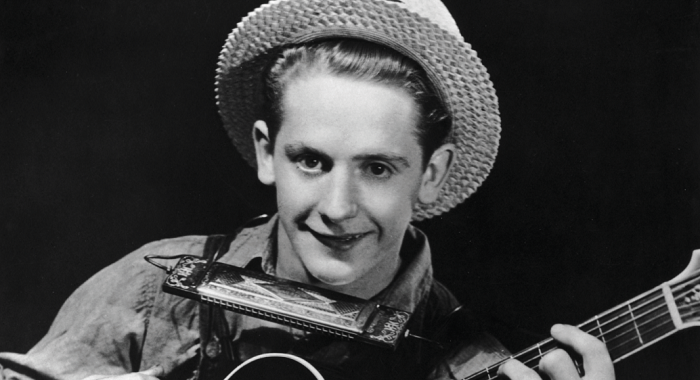THIS WEEK’S MUSE
LESTER WILLIAM POLSFUSS

“To this day, no one has come up with a set of rules for originality. There aren’t any.”
In the late 1920s, teenager Lester William Polsfuss was playing in a local country music band in the noisy bars, drive-ins, and roadhouses around his hometown of Waukesha, Wisconsin. He was a promising singer and, despite his age, an even more promising guitarist.
And he wanted to be heard – above the other musicians and especially above the noise from those there to drink and talk rather than to listen. Venues could be somewhat raucous and in the days before effective microphones, being heard was a constant battle on stage and off.
He began experimenting with adapting his guitar in an attempt to make it louder. He took parts of an old phonograph and wired them into his guitar, then out again, to the phonograph speaker.
With a lot of creative thinking and a little luck, the boy had built himself a rudimentary electric guitar. The invention was crude, and he wasn’t the first to try. Earlier patents show that telephone components were already being adapted inside violins and banjos to help amplify sound.
But he was every bit a pioneer, there right at the beginning of a technological and creative innovation that would change music forever. Over the years he continued to play music and to reinvent the guitar. Years later the boy would become better known by his stage name, Les Paul.
“Here’s the secret about the guitar, it’s defiant. It will never let you conquer it. The more you get involved with it, the more you realize how little you know.”
Les Paul went on to be a hugely successful musician, playing for a few years in Chicago, then onto New York City in the late 1930s. He scored his first US No.1 with Bing Crosby in 1945. Paul became a talented musician and jazz guitarist, recorded dozens of albums across a seven-decade career and working with many of the greatest musicians of any particular decade in which he worked.
“I wanted to create music that was so different that my mother could tell me from anyone else.”
He continued to innovate the guitar and recording techniques throughout his life. The solid body guitar we know and love today came from his early 1940s prototype – “The Log.” It was a basic but effective solid wood design that addressed the problems of sustain and feedback created by the simply electrification of acoustic guitars.
“I wanted something very dense, something that would sustain long and more pieces of wood that would be soft, sweet, for more of a mellow sound.”
Add to that other innovations musicians take for granted today. Multitrack recording, the home studio, the hands-free harmonica holder, and add-on guitar effects. To some degree, they all came from Les Paul.
A great musician and true innovator, Lester William Polsfuss is the only inductee in both the Rock and Roll Hall of Fame and the National Inventors Hall of Fame.
HAPPENING
Friday, May 20, from 1–3pm
Chicken Tacos with Garlic Lime Greek Yogurt
With Agatha Buisson

Enjoy making warm tortillas with garlic lime Greek yogurt.
$43 – Member, $47 – Non-Member
